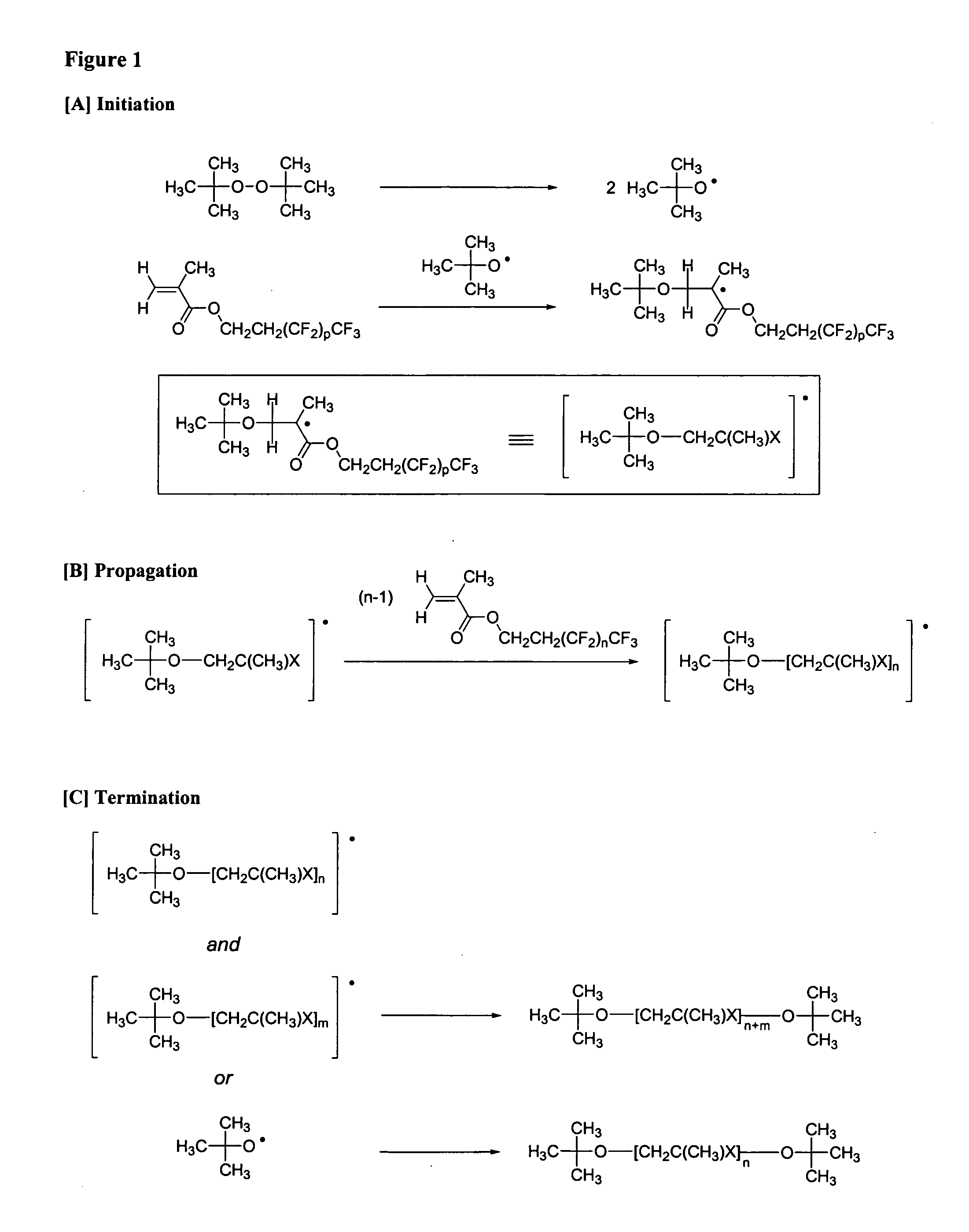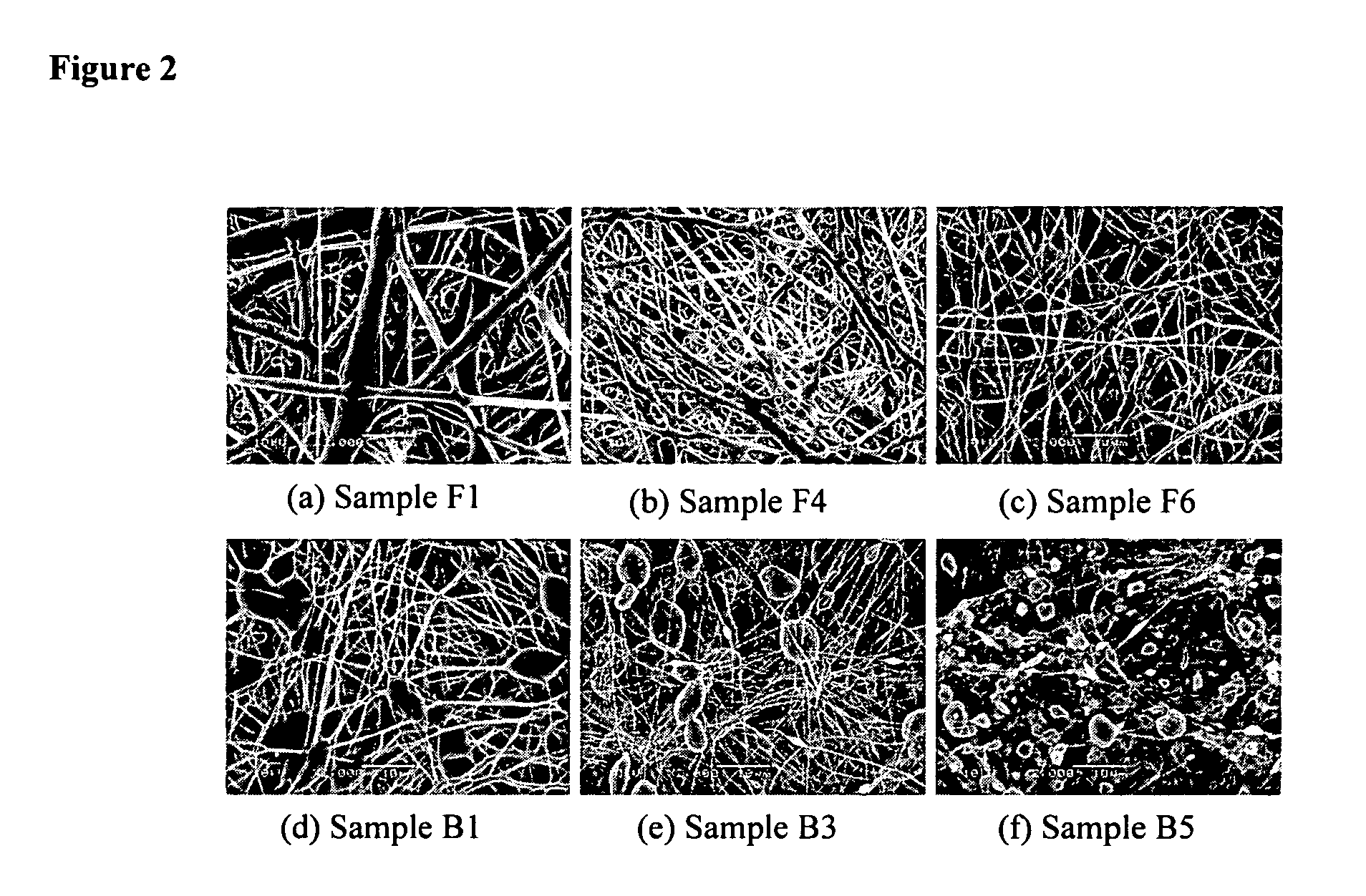Superhydrophobic fibers produced by electrospinning and chemical vapor deposition
a technology of which is applied in the field of superhydrophobic fibers produced by electrospinning and chemical vapor deposition, can solve the problems of high threshold sliding angle, high hysteresis, and insufficient surface chemistry to achieve superhydrophobicity, and achieve stable superhydrophobicity, low surface free energy, and high hysteresis. high
- Summary
- Abstract
- Description
- Claims
- Application Information
AI Technical Summary
Benefits of technology
Problems solved by technology
Method used
Image
Examples
Embodiment Construction
Overview
[0014] Herein a method to make highly superhydrophobic surfaces by combining electrospinning and iCVD is disclosed. The broad range of materials that can be electrospun, combined with the benign and conformal nature of the iCVD coating, make this method quite versatile.
Definitions
[0015] For convenience, certain terms employed in the specification, examples, and appended claims are collected here.
[0016] As used herein, “superhydrophobic surfaces” are surfaces with water contact angles greater than about 150°.
[0017] The term “contact angle” refers to the liquid side tangential line drawn through the three phase boundary where a liquid, gas and solid interact. In certain embodiments said liquid is water, n-decane, n-octane, or n-heptane.
[0018] The phrase “dynamic contact angle” may be divided into “advancing contact angle” and “receding contact angle” which refer to the contact angles measured when the three phase line is in controlled movement by wetting the solid by a...
PUM
| Property | Measurement | Unit |
|---|---|---|
| surface energies | aaaaa | aaaaa |
| surface energies | aaaaa | aaaaa |
| dispersive surface energy | aaaaa | aaaaa |
Abstract
Description
Claims
Application Information
 Login to View More
Login to View More - R&D
- Intellectual Property
- Life Sciences
- Materials
- Tech Scout
- Unparalleled Data Quality
- Higher Quality Content
- 60% Fewer Hallucinations
Browse by: Latest US Patents, China's latest patents, Technical Efficacy Thesaurus, Application Domain, Technology Topic, Popular Technical Reports.
© 2025 PatSnap. All rights reserved.Legal|Privacy policy|Modern Slavery Act Transparency Statement|Sitemap|About US| Contact US: help@patsnap.com



